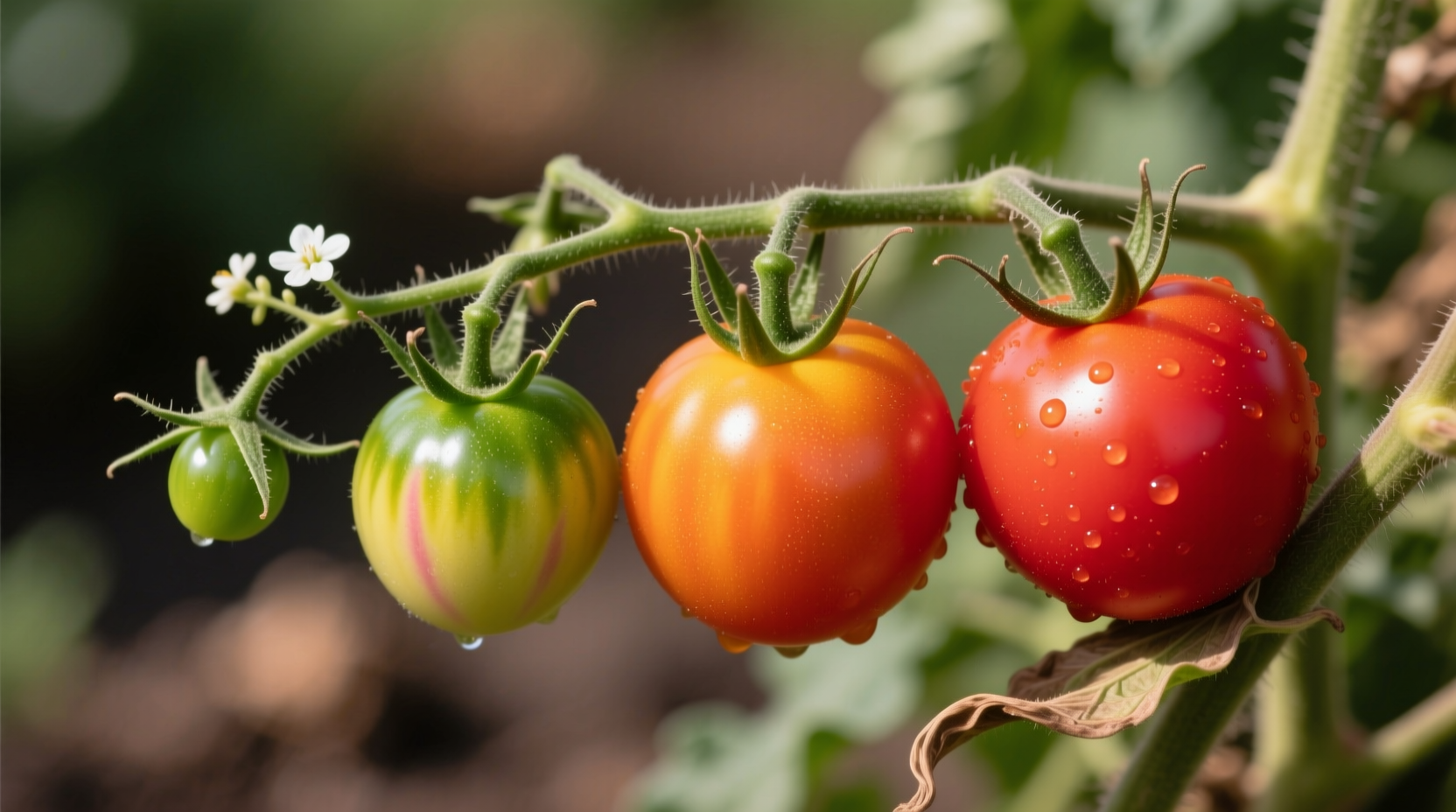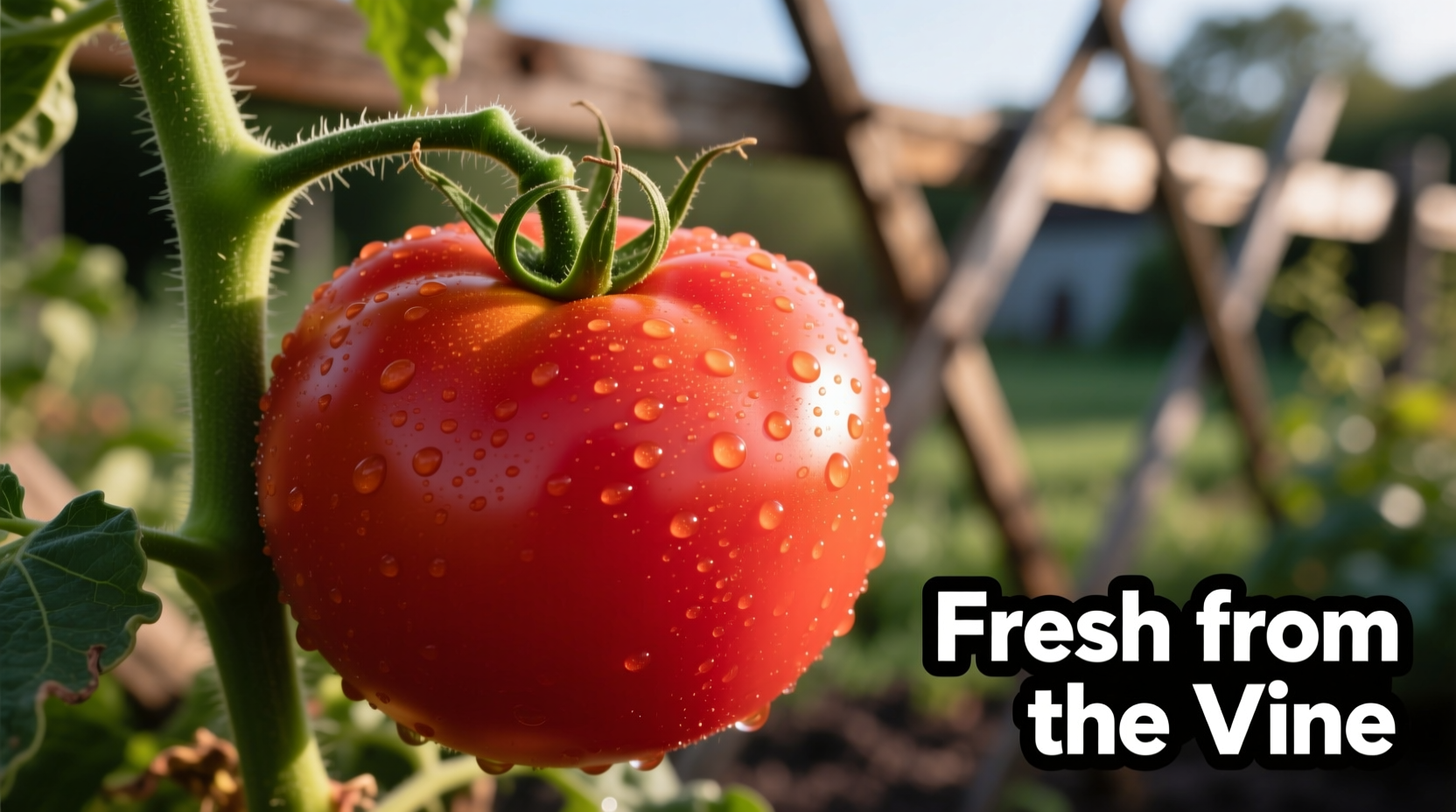Ever wondered why those "vine ripe" tomatoes at your grocery store often lack that garden-fresh flavor? You're not alone. Understanding the truth behind vine ripe labeling could transform how you select tomatoes and elevate your cooking from bland to extraordinary. Let's uncover what "vine ripe" really means and how to find tomatoes that deliver on their flavor promise.
The Vine Ripe Labeling Myth
"Vine ripe" has become one of the most misunderstood terms in produce aisles. Despite what the label suggests, most commercially available "vine ripe" tomatoes are not fully ripened on the vine. The U.S. Department of Agriculture permits tomatoes to be labeled "vine ripe" even when harvested at the mature green stage (technically known as the "breaker stage")—when the tomato shows the first hint of color change but is still mostly green.
Commercial growers pick tomatoes at this stage because fully ripened tomatoes are too soft for shipping and have a much shorter shelf life. After harvesting, these "vine ripe" labeled tomatoes are typically treated with ethylene gas in controlled environments to trigger the ripening process during transportation.
| Ripening Method | Harvest Timing | Flavor Development | Shelf Life |
|---|---|---|---|
| True Vine Ripened | When fully colored and slightly soft | Maximum sugar and acid balance, complex flavor compounds | 2-3 days |
| "Vine Ripe" Commercial | Mature green (breaker stage) | Limited flavor development, often bland | 7-14 days |
| Vine Ripened at Home | When 80-100% colored | Near-optimal flavor with proper conditions | 3-5 days |
Why Ripening Method Matters for Flavor
The difference between truly vine-ripened tomatoes and their commercially ripened counterparts isn't just marketing—it's biochemistry. When tomatoes ripen on the vine, they develop complex flavor compounds through a carefully balanced process:
- Sugar accumulation continues until peak ripeness, creating the perfect sweet-tart balance
- Volatile aroma compounds develop fully, contributing to that unmistakable "fresh tomato" scent
- Lycopene and other antioxidants reach optimal levels during the final ripening stages
- Texture development creates the ideal firm-yet-juicy consistency
Research from the University of California, Davis published in HortScience confirms that tomatoes ripened off the vine show significantly lower concentrations of key flavor volatiles compared to those ripened on the plant. The study found that vine-ripened tomatoes contained up to 37% more of the compounds responsible for that characteristic fresh tomato aroma.

How Commercial "Vine Ripe" Tomatoes Are Actually Produced
Here's what happens to most tomatoes labeled "vine ripe" before they reach your store:
- Harvest at breaker stage (when 10-30% of surface shows color change)
- Packaging and cooling for transport
- Ethylene gas treatment during shipping to trigger ripening
- Temperature-controlled ripening in distribution centers
- Final color development in retail stores
This process, documented by the USDA Agricultural Research Service, allows tomatoes to appear ripe while maintaining the firmness needed for commercial distribution. However, the flavor development remains incomplete compared to true vine ripening.
How to Identify Truly Vine-Ripened Tomatoes
Since labeling can be misleading, here's how to spot genuinely vine-ripened tomatoes:
- Check for slight softness - Truly vine-ripened tomatoes yield slightly when gently squeezed
- Look for uniform color - No green shoulders or patches (common in commercial varieties)
- Examine the stem scar - A dry, brown scar indicates natural vine separation
- Smell test - Genuine vine-ripened tomatoes have a strong, sweet aroma
- Seasonality matters - Peak flavor occurs in summer when locally grown options are available
Your best bet for authentic vine-ripened tomatoes is farmers' markets during peak season (June-August in most regions) or growing your own. The Agricultural Marketing Resource Center notes that locally grown tomatoes sold within 24 hours of harvest show flavor profiles 2-3 times more complex than commercially distributed "vine ripe" labeled varieties.
Practical Tips for Better Tomato Selection
Whether you're shopping at a supermarket or farmers' market, these strategies will help you get the best flavor:
- Ignore the "vine ripe" label - Focus instead on appearance, texture, and aroma
- Choose heavier tomatoes for their size - indicates higher water content and freshness
- Store properly - Keep at room temperature away from direct sunlight until fully ripe
- Refrigerate only after cutting - Cold temperatures destroy flavor compounds in whole tomatoes
- Ask questions - At farmers' markets, inquire about harvest timing and ripening practices
Growing Your Own Truly Vine-Ripened Tomatoes
If you have space for even a few containers, growing your own tomatoes ensures genuine vine ripeness:
- Pick the right varieties - Heirloom types like Brandywine, Cherokee Purple, or Black Krim develop exceptional flavor when vine-ripened
- Harvest at peak color - When tomatoes show full varietal color and slight softness
- Leave the cap and stem - This preserves the protective layer that maintains freshness
- Pick in the morning - When sugar content is highest after cool night temperatures
- Allow final ripening indoors - If pests threaten your crop, pick when 60% colored and finish ripening inside
According to Cornell University's vegetable growing guide, tomatoes allowed to ripen fully on the vine contain up to 20% more lycopene and significantly higher levels of volatile flavor compounds than those ripened off the vine. The difference is particularly noticeable in heirloom varieties, which were bred for flavor rather than shipping durability.
When "Vine Ripe" Labeling Might Actually Be Accurate
While most commercial "vine ripe" tomatoes don't meet the literal definition, some specialty producers do offer genuinely vine-ripened options:
- Local farm stands - Especially those selling within 24 hours of harvest
- Organic specialty brands - Some smaller organic producers allow full vine ripening
- Vine-on-the-plant packaging - Tomatoes sold still attached to the vine segment
- Regional specialty stores - In tomato-growing regions during peak season
Look for specific claims like "harvested at peak ripeness" or "fully vine-ripened" rather than the generic "vine ripe" label. The most reliable indicator remains the tomato's texture and aroma, regardless of labeling.
Maximizing Flavor from Any Tomato
If you can't find truly vine-ripened tomatoes, these techniques will help maximize flavor:
- Ripen properly at home - Place unripe tomatoes in a paper bag with a banana to concentrate ethylene
- Store stem-side down - Reduces moisture loss through the scar
- Bring to room temperature - Always before serving, even if refrigerated after cutting
- Use immediately after cutting - Flavor compounds degrade rapidly once exposed to air
- Combine with complementary flavors - Good olive oil, fresh basil, and flaky salt enhance even modest tomatoes











 浙公网安备
33010002000092号
浙公网安备
33010002000092号 浙B2-20120091-4
浙B2-20120091-4